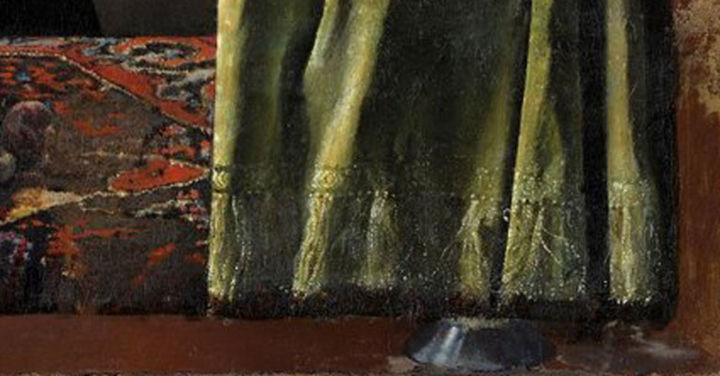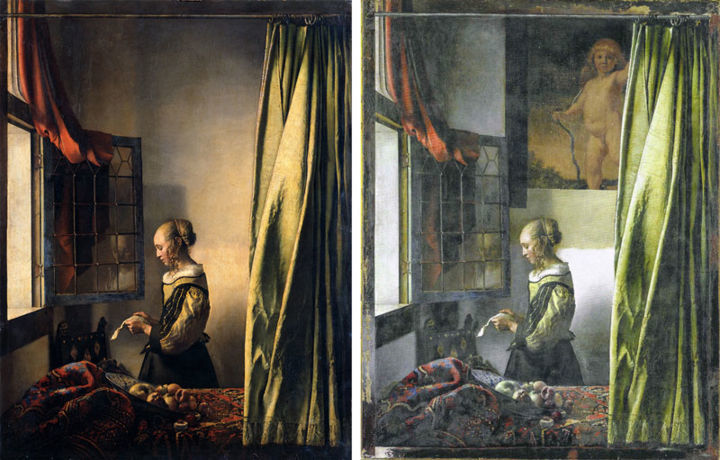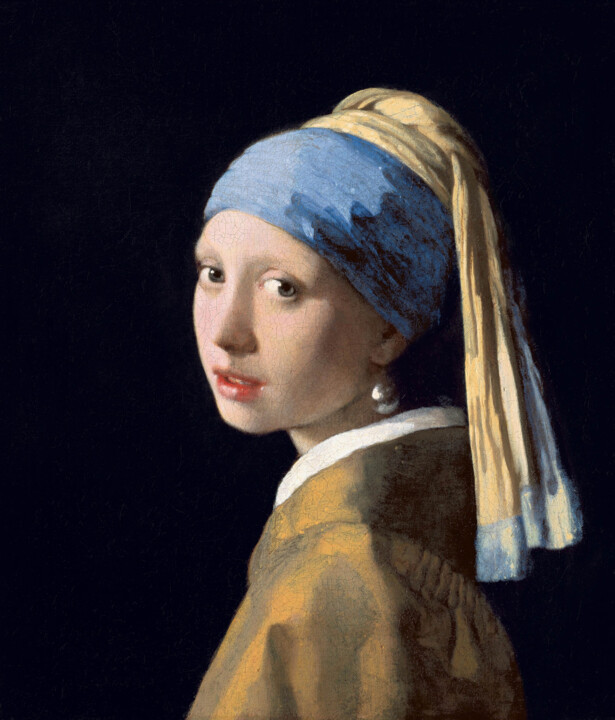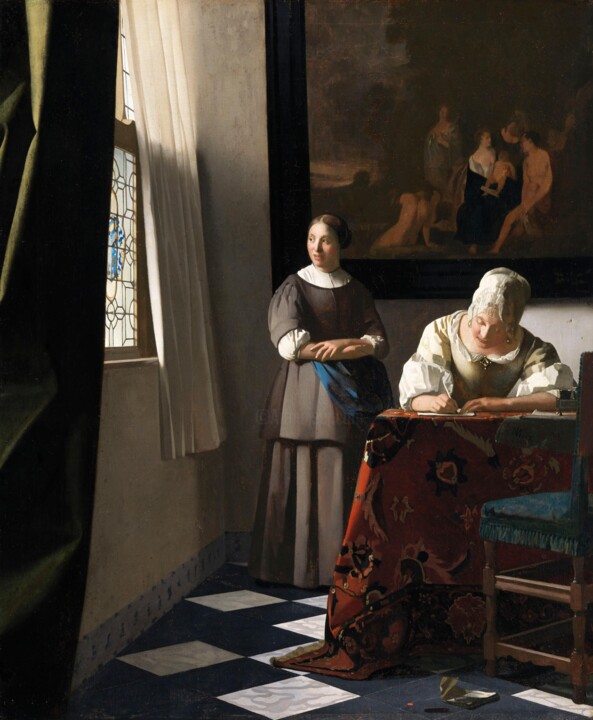
A painting that required a major restoration
In Vermeer's Letter Reader kept at the Gemaldegalerie in Dresden, a mysterious wine glass has been discovered. After a major restoration, the painting from 1657-59 will be exhibited from today. It includes the removal of all overpaint and a new image of Cupid appearing on the back wall.
The discovery of a Dutch Roemer glass hidden under the curtain
The lower part of a Dutch Roemer glass (hand-cut colored crystal glasses) was also discovered at the bottom of the composition. The rounded shape of the glass is now visible in dark blue-gray with white highlights when it catches sunlight after the overpaint has been removed. Almost all of the roemer was covered with a green curtain. This was added by Vermeer while he was composing the composition. But the glass base remained. Later, the base was covered with 18th century paint. This has been meticulously removed.
On the x-rays, you can clearly see the entire glass, which was 18 cm high. Conservators can even see the wine level and vine decor.

Girl Reading a Letter at an Open Window, 1657-1659, Johannes Vermeer. Gemäldegalerie, Dresden, Germany (before and under restoration)
What did Vermeer want to represent in this painting?
Originally, Vermeer perhaps wanted the glass to look like it was resting on a railing and wobbling in front of the viewer. Vermeer may also have framed the canvas in such a way that it appears to be resting on the wood of a regular frame. Vermeer may also have wanted the framed painting to be hung in an interior in order to create the trompe-l'oeil illusion as if it were an opening in the wall. This would have allowed for a fictitious view in a room where the woman could have read a letter. Perhaps the roemer has nothing to do with the Reader literally and it is simply the remains of an earlier composition that the artist then reassigned.
Vermeer changed his mind and painted the entire wineglass with the curtain, disregarding his original intention. The curtain has been lifted and Vermeer's decision is being honored. The Hidden Roemer is another puzzle that needs to be solved!
Exhibition at Gemäldegalerie Alte Meister from 09/10/2021 to 01/02/2022


 Jean Dubreil
Jean Dubreil





